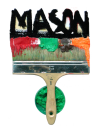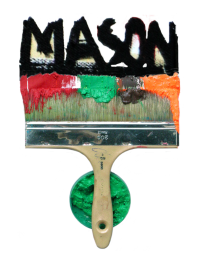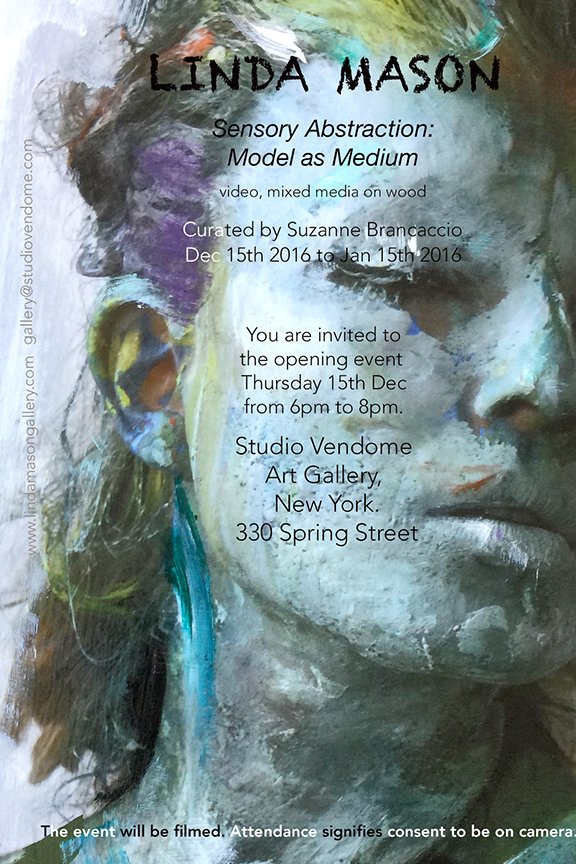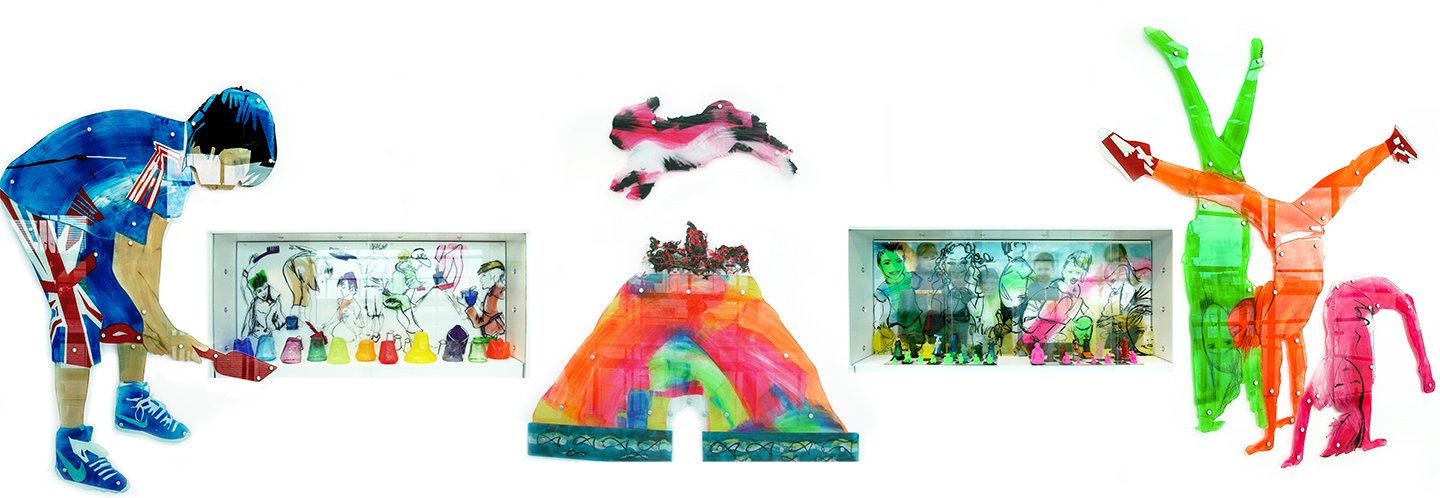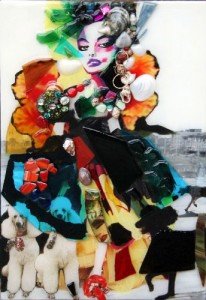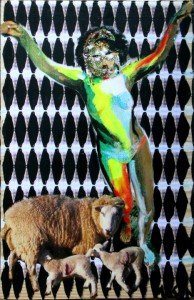“Spring Masquerade” 2010, was a collaboration of artist Linda Mason, designer and artisan Luis Rivera Tores, and decorator and designer Cleve Crosby. In celebration of spring, the works in this show focus on the theme of the mask, inspired by those handcrafted by Tores, and the performative, ceremonial nature of the masquerade.
Springtime is a period of beauty, growth, renewal, and transformation. Similarly, the mask perpetuates this transformative quality, as its expressive power resides in its ability to alter the appearance of the wearer. But the mask, of which there is a long and extensive history stemming from ritual and theater, contains various implications and layers of meaning. Beyond its decorative use, it may serve as a disguise, as a form of concealment, or for the purpose of protection. Here, Tores’ elaborate and intricately crafted masks are the basis for the show’s exploration of the mystery and drama inherent to the mask in a wider context.
Central to the exhibition are new photography and mixed media works by Linda Mason. Incorporating Tores’ masks into her constantly evolving practice of body painting, Mason presents both an exaggeration and denial of the flesh by applying thick, painterly strokes of vivid color on the nude form. Her works present a dichotomy of exhibitionist display and illusioned concealment, using both her subject and medium in a continuous play to challenge the viewer’s notions of perception.
![]()
